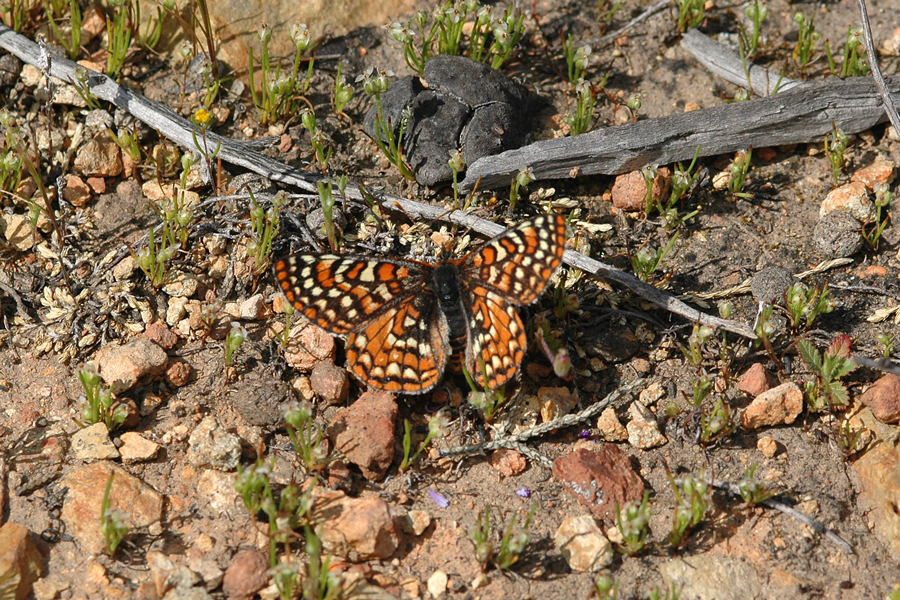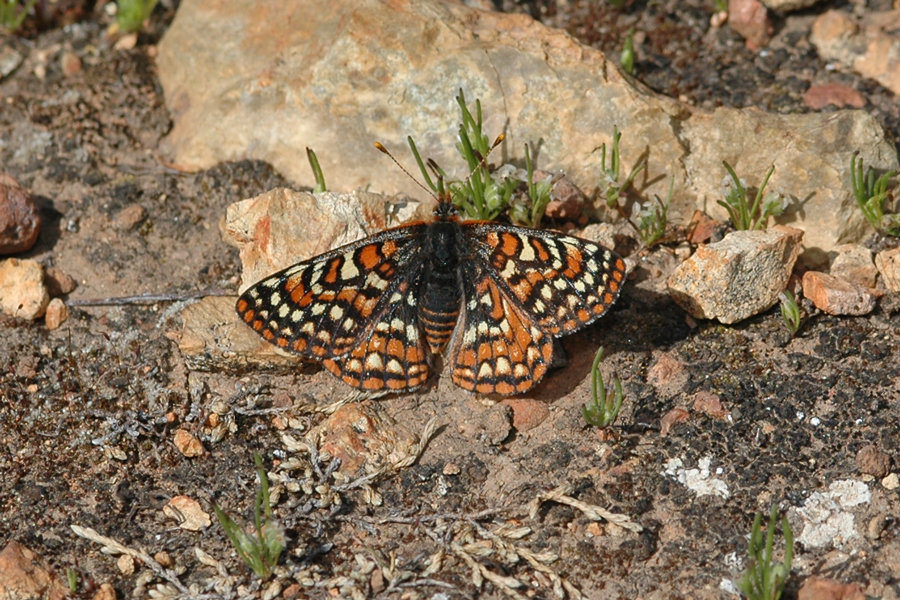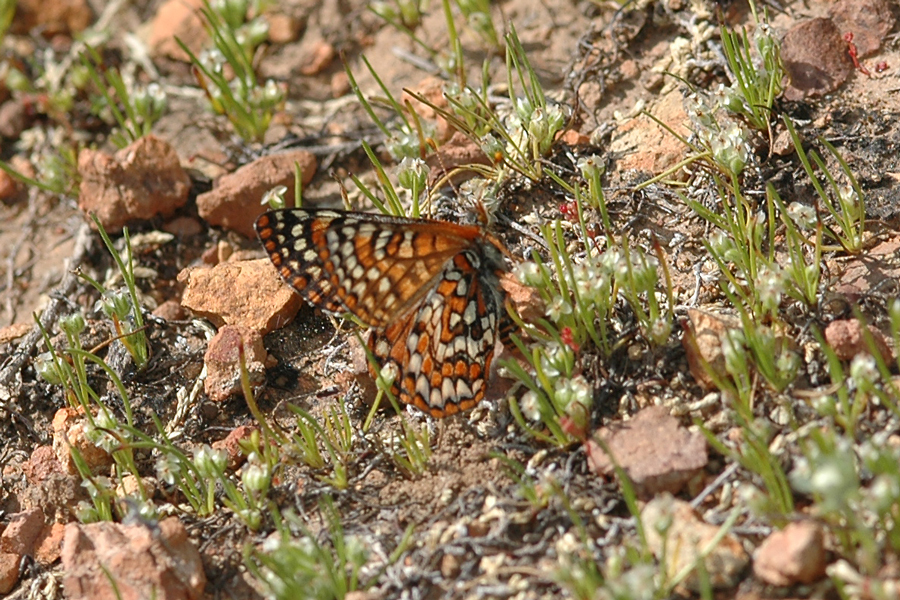Euphydryas editha quino
Quino Checkerspot
Listed as Endangered in 1997, this butterfly was common before widespread development in its habitats in southern California. Unfortunately, it seems that open, relatively flat areas preferred by quino are also ideal places for human development. Yet the butterfly persists, in sometimes alarmingly small numbers, with populations in Riverside and San Diego Counties, and across the border into Baja. Some habitat is now protected, but it's a fraction of what was initially proposed, and may not be sufficient long-term.
The Quino checkerspot has its main larval food plants, and a few they can use if necessary or under certain conditions*. The main hosts are Plantago erecta, P. patagonica, Antirrhinum coulterianum, and A. nuttallianum (all Plantaginaceae). Collinsia concolor (also Plantaginaceae) is used at higher elevations where the plants are small; Castilleja exserta and Cordylandthus rigidus (both Orobanchaceae) may be used "if the primary host plants are not available or senesce before larval maturity." All of these plants were formerly in the Scrophulariaceae family.
See this petition to list Quino as a California endangered species from 2020. There is a lot of good information there.


